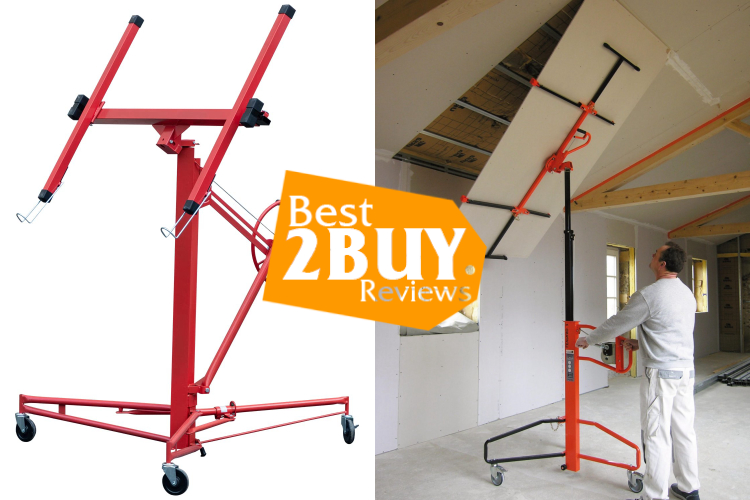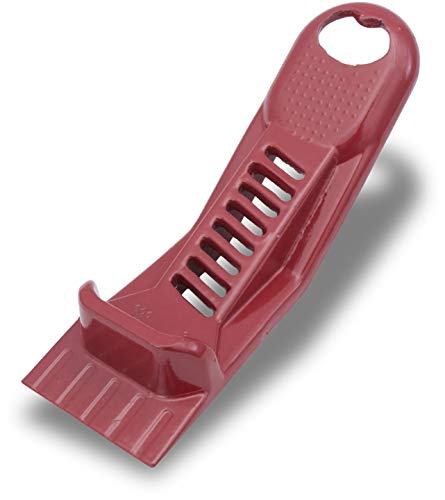Drywall Lift: A Comprehensive Guide To Choosing The Right One

- 1. Drywall Lift: A Comprehensive Guide To Choosing The Right One
- 1.1. Understanding Drywall Lifts
- 1.1.1. What are Drywall Lifts?
- 1.1.2. Types of Drywall Lifts
- 1.2. Advantages of Using Drywall Lifts
- 1.3. How to Use a Drywall Lift
- 1.4. Considerations When Choosing A Drywall Lift
- 1.4.1. Weight Capacity and Dimensions
- 1.4.2. Lift Height and Reach
- 1.4.3. Ease of Setup and Operation
- 1.4.4. Portability and Storage
- 1.4.5. Durability and Structure
- 1.4.6. Safety Considerations
- 1.4.7. Budget and Overall Value
- 1.5. Conclusion
- 1.1. Understanding Drywall Lifts
Installing drywall in the ceiling is quite a tough and risky job for a single person to do. However, if you love doing DIY projects, a drywall lift is what you will need for this. These specialized pieces of equipment are designed to lift and hold drywall sheets in place, enabling individuals to work alone or with minimal assistance, ultimately streamlining the installation process.
Understanding Drywall Lifts
What are Drywall Lifts?
Drywall lifts are mechanical devices engineered to hoist and hold drywall sheets in position, eliminating the need for multiple individuals to manage the installation. They usually consist of a sturdy metal frame with adjustable arms or cradles that can hold the drywall securely. The lift is equipped with a winch or crank mechanism that raises and lowers the drywall, allowing for precise positioning against walls or ceilings.
Types of Drywall Lifts
- Manual Drywall Lifts: These require physical effort to operate, usually with a hand crank or lever. Users adjust the height and angle manually using these lifts. They are suitable for smaller projects or occasional use.
- Electric Drywall Lifts: Powered by electricity, these lifts offer more convenience as they can lift and position drywall sheets with the press of a button. They are ideal for larger or more frequent projects.
Advantages of Using Drywall Lifts
- Time-Saving: Drywall lifts significantly expedite the installation process by allowing a single person to lift and hold drywall sheets in place. This reduces the need for multiple people, saving time and labor.
- Reduces Physical Strain: These lifts minimize physical strain and the risk of injury for workers. They eliminate the need for manual lifting and holding of heavy drywall sheets, reducing the strain on the back and arms.
- Precision and Accuracy: Drywall lifts ensure that sheets are accurately positioned and held in place, allowing for precise installation. This leads to a more professional and finished look, reducing the need for adjustments or corrections.
- Versatility: They are adjustable and can handle different sizes and weights of drywall sheets, making them versatile for various projects.
- Safety: These lifts enhance safety by securely holding the drywall in place while it's being fastened. This minimizes the risk of the drywall falling or slipping during installation, which could cause injury or damage.
- Single-Person Operation: One person can efficiently operate a drywall lift, making it convenient for smaller projects or situations where there's a shortage of labor.
- Efficiency in Ceiling Installations: For ceiling installations, drywall lifts are particularly useful, as they can hold the drywall in place against gravity, allowing for easier attachment without needing additional support.
- Cost-Effective: While there might be an initial cost to acquire or rent a drywall lift, it can be cost-effective in the long run due to the time saved and the reduction in potential rework.
- Less Material Damage: When manually handling drywall, there's a higher chance of damaging the edges or the surface. Using a lift minimizes such damage, ensuring the integrity of the material.
- Reusability: Quality drywall lifts are durable and can be used multiple times, providing value across various projects.
How to Use a Drywall Lift
Using a drywall lift typically involves the following steps:
- Assembly: Set up the drywall lift according to the manufacturer’s instructions, ensuring that it’s stable and secure.
- Loading the Drywall: Slide the drywall sheet onto the lift's platform, ensuring it is positioned securely.
- Raising the Drywall: Use the crank or power button to elevate the drywall to the desired height.
- Positioning: Maneuver the lift so that the drywall is in the correct position against the wall or ceiling.
- Screwing or Nailing: Once positioned, secure the drywall in place by screwing or nailing it to the structure.
Considerations When Choosing A Drywall Lift
Selecting the appropriate drywall lift is paramount for efficient, safe, and professional outcomes. Various elements necessitate consideration when choosing the most fitting lift for your requirements.
Weight Capacity and Dimensions
The foundational factor of a drywall lift is its weight capacity. Confirm that the lift can manage the weight of your intended drywall sheets. Most lifts support weights ranging between 150 to 200 pounds, while heavy-duty models can handle up to 300 pounds. Moreover, factor in the size of the sheets you'll be working with; some lifts cater to standard 4x8-foot panels, while others accommodate larger sizes.
Lift Height and Reach
The maximum lift height and reach are pivotal, particularly for ceiling or high wall projects. Assess the lift's extension capabilities to ensure they align with your project requirements. Certain models extend to heights of 11 feet or more, granting flexibility in varied work environments.
Ease of Setup and Operation
A user-friendly design and simple assembly are significant in selecting a drywall lift. Seek a model that can be assembled and operated by a single person. Features like quick-release mechanisms, easily adjustable components, and intuitive controls streamline setup, enhancing overall efficiency.
Portability and Storage
For projects involving mobility, prioritize a lightweight and easily transportable drywall lift. Some models offer foldable options or come equipped with wheels, enabling convenient movement and storage during downtimes.
Durability and Structure
The build quality and materials used in the lift's construction are crucial for its longevity. Opt for robust, high-quality steel or aluminum construction capable of enduring regular use. A well-constructed lift ensures stability and durability during operations.
Safety Considerations
Safety features are non-negotiable. Look for lifts with secure locking mechanisms, stabilizing outriggers, and anti-slip components to mitigate accidents and injuries. Models with adjustable cradles and tilt functions contribute to precision and minimize damage to the drywall.
Budget and Overall Value
Factor in your budget and assess the value various models offer. While affordability is essential, prioritize features and quality aligned with your needs. Sometimes, investing slightly more in a higher-quality lift can yield long-term savings by avoiding frequent repairs or replacements.
Conclusion
Drywall lifts prove to be indispensable for professional contractors and DIY enthusiasts alike, streamlining the typically arduous task of drywall installation. They boost efficiency, safety, and accuracy, rendering them a valuable asset for individuals engaged in construction or renovation projects requiring drywall installation. By enabling solitary installation and minimizing physical strain, these lifts have established themselves as a fundamental element in contemporary construction methods, notably enhancing the overall drywall work experience.











